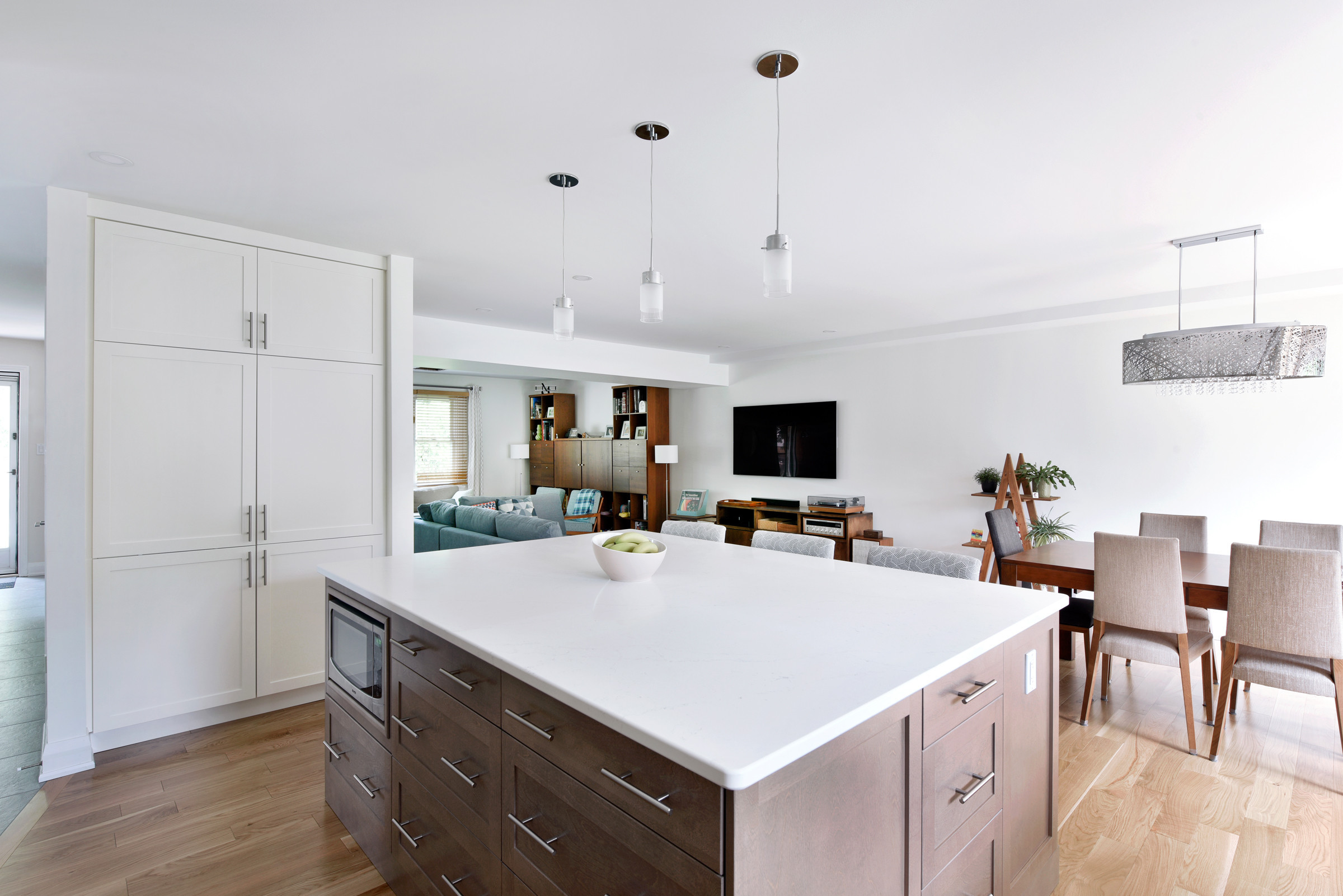Home design is always evolving, but the pandemic has led to swift shifts in how spaces are used. COVID restrictions led many of us to become homebodies who work, play and exercise at home. We need our living spaces to reflect our new habits. Here are four ways the pandemic has changed home design.
Canadian winters can be hard on a home. Rapid temperature fluctuations and shifts in humidity threaten to damage your home’s foundation.
Thankfully, there are steps you can take to prevent winter foundation damage and keep your home’s structural integrity intact.
We’ve put together some tips to prevent the most common cold weather foundation issues. First, it’s important to understand what causes foundation problems.
Multipurpose spaces
According to an American Time Use Survey, people spent more time tending to their gardens, reading to children, and improving their homes in 2020 than in 2019. This increased time at home has created a demand for multipurpose spaces.
Gone are the days when the kitchen was solely used for cooking, and the dining room was just a place to eat (or to store your grandmother’s antiques). Work spaces are being incorporated into kitchen and bedroom designs and living rooms must double as play areas.
Homeowners are opting for furniture that serves many functions such as large kitchen islands for entertaining, cooking and doing school work. Murphy beds and other types of transitional furniture make it easy to transform a bedroom into a home office.
Natural light and calming colours
All the anxiety and chaos of the pandemic has driven people to cultivate tranquility in their homes.
One of the most powerful ways to create a sense of peace and calm is through the use of natural light. Large windows are the clear solution for homeowners who want to enjoy the mood-boosting powers of the outdoors from the comfort of home.
Light, neutral colours are also having a moment as people strive to create a serene atmosphere in their living space. More homeowners are opting for a calming colour palette of greys, creams and whites.
Transitional open concept design
Open concept designs have been popular for years, but the pandemic has made people reassess their needs. Homeowners want an open space that also offers privacy.
Creative interior designs allow people to enjoy the bright, airy feel of open concept spaces while providing temporary privacy solutions such as pocket doors and chic room dividers.
Luxury outdoor living
The restrictions imposed by the pandemic spurred greater demand for outdoor living spaces. People have been spending more time eating, playing, and relaxing outdoors, and they want a space that’s versatile enough to meet their needs.
As people spend more time in their backyard, they’re seeking privacy and shade structures such as gazebos and screened porches to feel a sense of seclusion.
Homeowners also want to compliment the natural beauty of the outdoors with luxury furniture, high-end fireplaces and beautiful decks. If your backyard is also your dining, entertainment and relaxation area—why not invest in improving it?
We can design a home that meets your changing needs
At Amsted, we specialize in design-build services to create a unique living space that is unmistakably yours. Our professional design and construction experts will work together to create a home that will meet your changing needs for years to come. Book a personal consultation for your home.
What causes winter foundation damage?
The primary cause of winter foundation damage is frost heave. Frost heave occurs when ground water freezes and expands.
The expanding soil puts pressure on your home’s foundation and any other structure above the frost line such as a deck, shed, or slab-on-grade. Without proper prevention measures, frost heave can cause cracks in your foundation and basement.
Frozen pipes will also cause issues. When the temperature drops below -6 °C pipes may freeze and burst. This causes flooding that can weaken your home’s foundation.
Here are a few tried-and-true tips to protect your foundation from temperature fluctuations.
How to protect your foundation from winter damage
Install proper insulation
It’s important to adequately insulate your basement or slab-on-grade foundation for the climate. Proper insulation will prevent your foundation from cracking. It will also reduce energy consumption and CO2 emissions.
Pipes need to be insulated as well. Even if you happen to live in an area that doesn’t typically have harsh winters like us folks in Ottawa, Canada, it’s a good idea to play it safe and insulate. Keeping your home above 12 °C, even when you’re not home, will help too.
Improve drainage
Sufficient drainage will keep water away from the building and prevent frost heave. It also reduces the chance of basement flooding and high humidity levels. We recommend installing French drains or a similar system.
Check foundation piers
If your foundation is built with piers, you should check their condition regularly. It’s a good idea to have a professional inspect your home [Link to: https://www.amsted.ca/news-videos/amsted-home-care-home-repairs-maintenance-smaller-upgrades-sized-to-fit-your-needs/] and advise you on whether you should fix or install additional piers.
Look for warning signs
You’ll want to keep an eye out for signs that your foundation is damaged.
Warning signs to be aware of:
- Cracks forming over windows, doorways and where the wall meets the ceiling.
- Cracks in tiles that are installed over concrete.
- Difficulty opening and closing doors or windows that had no previous problems.
If you notice any of the above signs, contact a professional to take a closer look.
We’re here to help
As part of our suite of services to care for your whole home, Amsted offers home inspections and repairs performed by our fully licensed Red-Seal trade professionals. Contact us to get started.










